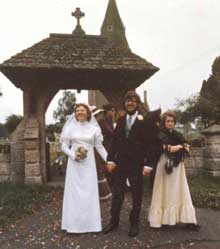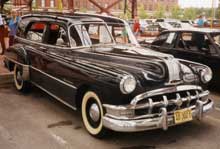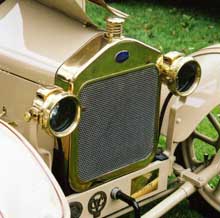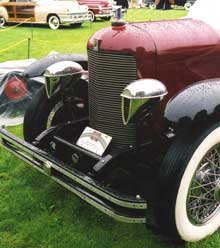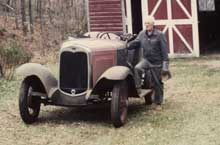Morgan Milestones
Jill and I were married 32 years ago today at the Church of Saint Peter and Saint Paul at Stoke Lacy in England's border county of Herefordshire. It was not what you'd call an old car wedding; the bride rode to the church in a Peugeot 304 and we made our getaway in a year-old Triumph Toledo. Serendipity was at work, however, the full significance of which became apparent as the years passed.
Stoke Lacy was the seat of the Morgan family, whose scion, Henry Frederick Stanley, founded the Morgan Motor Company, makers of three- and four-wheel cars. The Reverend Prebendary Henry George Morgan, HFS's father, was rector of Stoke Lacy for 50 years, and his grandfather, the Rev'd Henry Morgan, for 16 years before that. Jill grew up just down the lane from the church, at Stoke House, built for HFS's sister Dorothy, an enthusiastic Morgan driver herself (seen here chauffeuring her father in a "coal scuttle" Morgan). One of Jill's jobs as a teenager was to tend the Morgan family plot in the churchyard
After the Morgan factory at Malvern Link in neighboring Worcestershire, the church and Old Rectory at Stoke Lacy are the most popular Morgan shrines, Morgan owners the world over including them on their pilgrimages. It was appropriate then, after Peter Morgan, HFS's son and successor in the business, died in October 2003 that he be laid to rest in the family plot. Seeking a more prominent memorial, the Morgan Sports Car Club commissioned a memorial window for the church porch. Dedicated on September 17, 2005, the stained glass window is a trefoil design with a bust of PM, as he was fondly known, above an image of the Malvern Hills, which overlook the factory. Below the hills are PM's own Plus 8, known by its registration as AB 16, and a view of the works. The window compliments an earlier one in the opposite wall, remembering Morgan three-wheeler enthusiasts from California.
I've never owned a Morgan, and Jill hasn't either. Serendipity is at work there, too. Her Aunt Cicely (at right) often rode in her Uncle Sam's Morgan car, and Cicely's daughter Alison and husband John Smitheram bought a Plus 8 more recently to celebrate John's retirement. Until 1995 I had not even sat in a Morgan, but serendipity - being in the right place at the right time - allowed me to spend an afternoon at the helm of PM's own AB 16.

